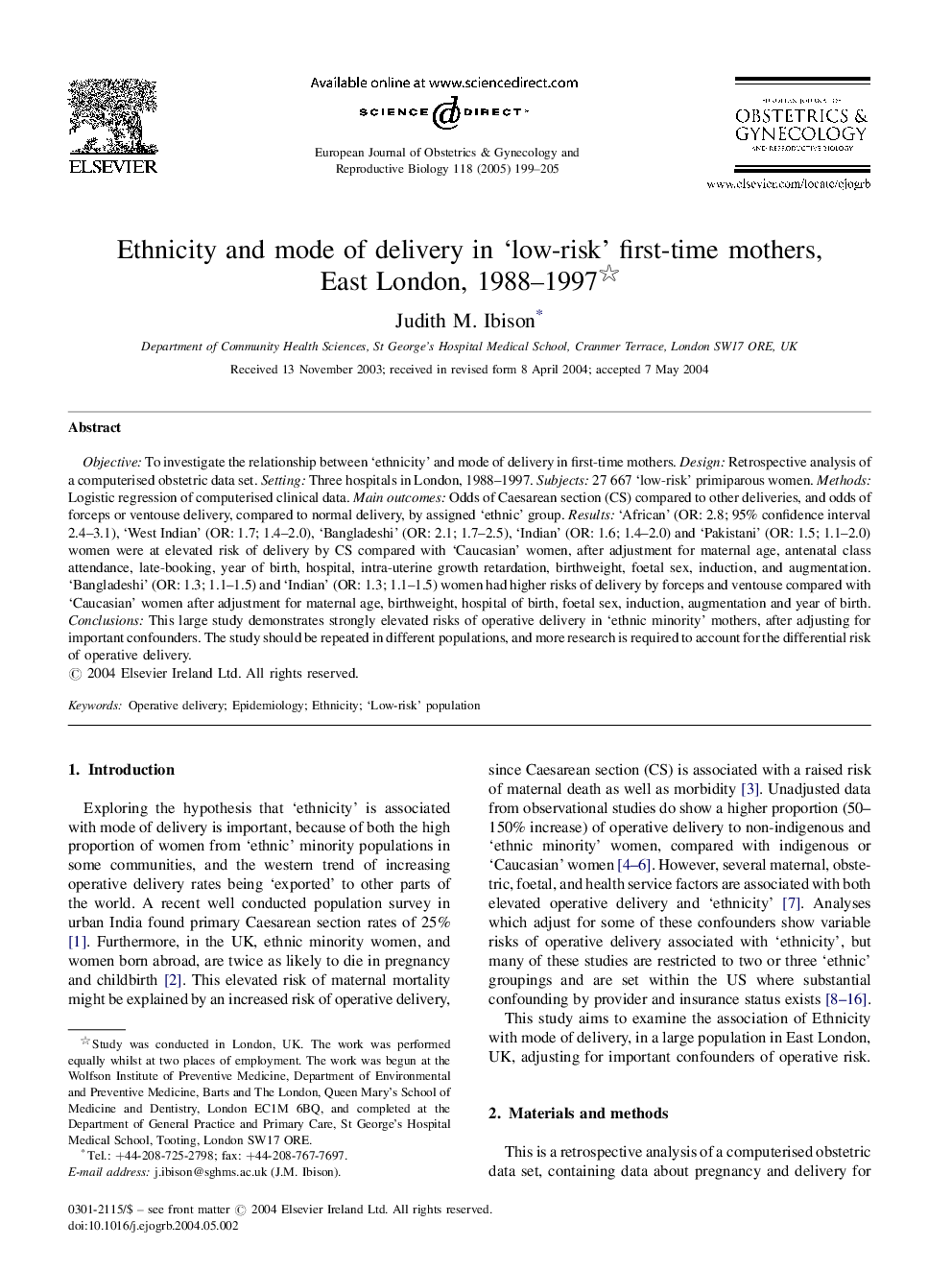| Article ID | Journal | Published Year | Pages | File Type |
|---|---|---|---|---|
| 10064766 | European Journal of Obstetrics & Gynecology and Reproductive Biology | 2005 | 7 Pages |
Abstract
Objective: To investigate the relationship between 'ethnicity' and mode of delivery in first-time mothers. Design: Retrospective analysis of a computerised obstetric data set. Setting: Three hospitals in London, 1988-1997. Subjects: 27Â 667 'low-risk' primiparous women. Methods: Logistic regression of computerised clinical data. Main outcomes: Odds of Caesarean section (CS) compared to other deliveries, and odds of forceps or ventouse delivery, compared to normal delivery, by assigned 'ethnic' group. Results: 'African' (OR: 2.8; 95% confidence interval 2.4-3.1), 'West Indian' (OR: 1.7; 1.4-2.0), 'Bangladeshi' (OR: 2.1; 1.7-2.5), 'Indian' (OR: 1.6; 1.4-2.0) and 'Pakistani' (OR: 1.5; 1.1-2.0) women were at elevated risk of delivery by CS compared with 'Caucasian' women, after adjustment for maternal age, antenatal class attendance, late-booking, year of birth, hospital, intra-uterine growth retardation, birthweight, foetal sex, induction, and augmentation. 'Bangladeshi' (OR: 1.3; 1.1-1.5) and 'Indian' (OR: 1.3; 1.1-1.5) women had higher risks of delivery by forceps and ventouse compared with 'Caucasian' women after adjustment for maternal age, birthweight, hospital of birth, foetal sex, induction, augmentation and year of birth. Conclusions: This large study demonstrates strongly elevated risks of operative delivery in 'ethnic minority' mothers, after adjusting for important confounders. The study should be repeated in different populations, and more research is required to account for the differential risk of operative delivery.
Related Topics
Health Sciences
Medicine and Dentistry
Obstetrics, Gynecology and Women's Health
Authors
Judith M. Ibison,
